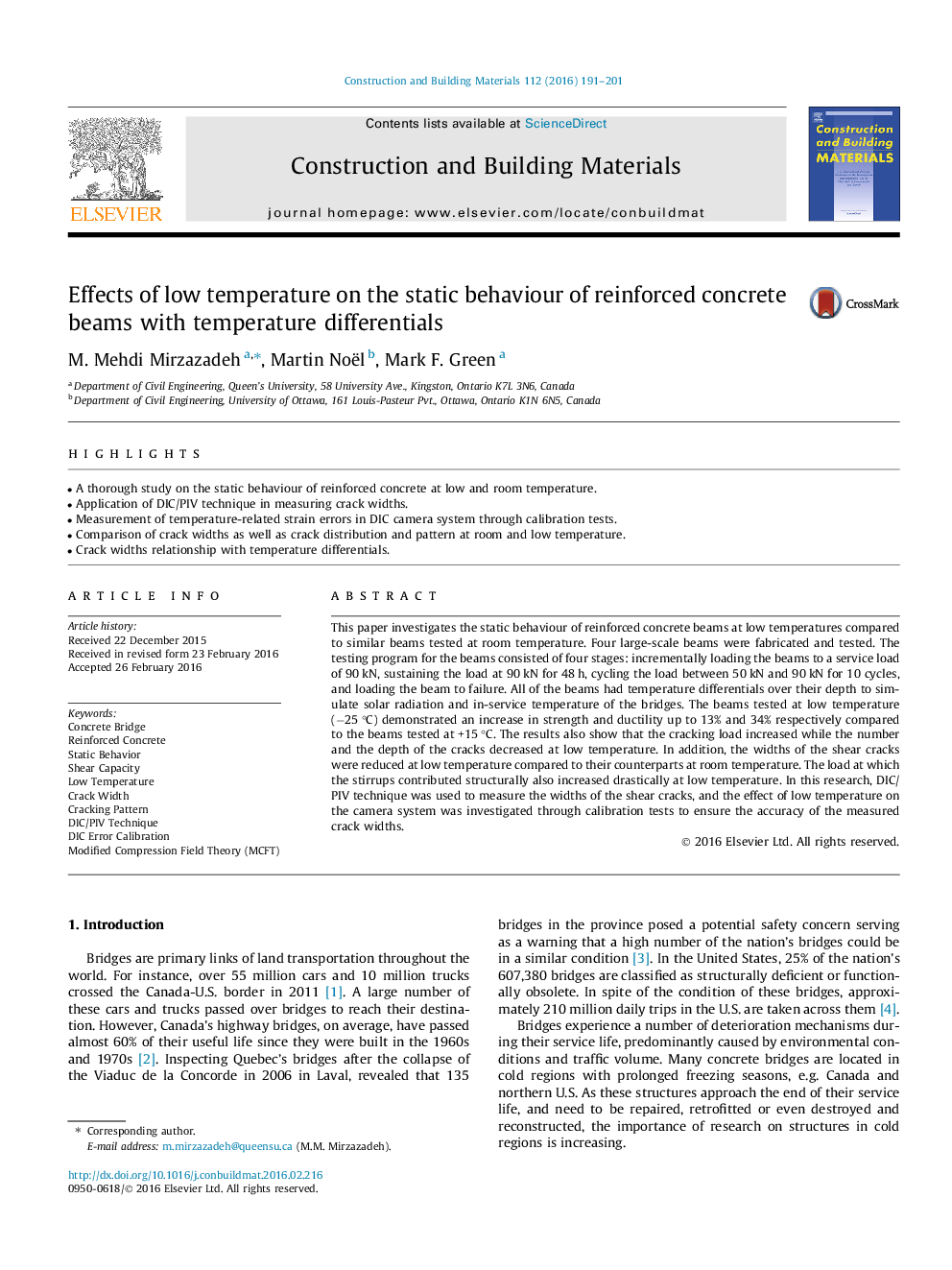| Article ID | Journal | Published Year | Pages | File Type |
|---|---|---|---|---|
| 6719061 | Construction and Building Materials | 2016 | 11 Pages |
Abstract
This paper investigates the static behaviour of reinforced concrete beams at low temperatures compared to similar beams tested at room temperature. Four large-scale beams were fabricated and tested. The testing program for the beams consisted of four stages: incrementally loading the beams to a service load of 90 kN, sustaining the load at 90 kN for 48 h, cycling the load between 50 kN and 90 kN for 10 cycles, and loading the beam to failure. All of the beams had temperature differentials over their depth to simulate solar radiation and in-service temperature of the bridges. The beams tested at low temperature (â25 °C) demonstrated an increase in strength and ductility up to 13% and 34% respectively compared to the beams tested at +15 °C. The results also show that the cracking load increased while the number and the depth of the cracks decreased at low temperature. In addition, the widths of the shear cracks were reduced at low temperature compared to their counterparts at room temperature. The load at which the stirrups contributed structurally also increased drastically at low temperature. In this research, DIC/PIV technique was used to measure the widths of the shear cracks, and the effect of low temperature on the camera system was investigated through calibration tests to ensure the accuracy of the measured crack widths.
Keywords
Related Topics
Physical Sciences and Engineering
Engineering
Civil and Structural Engineering
Authors
M. Mehdi Mirzazadeh, Martin Noël, Mark F. Green,
